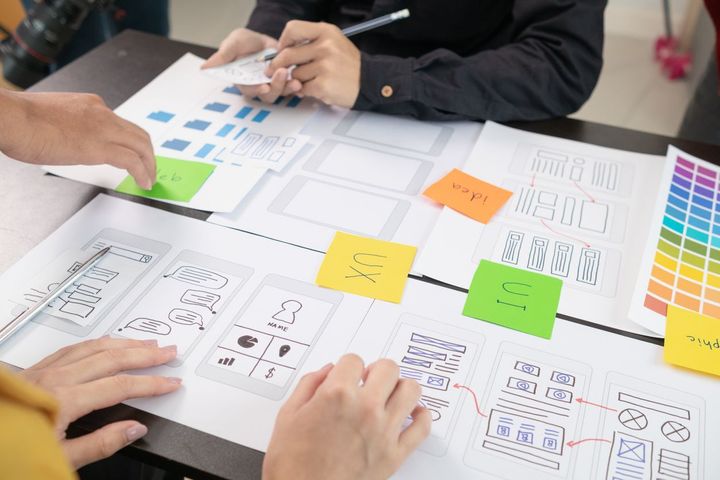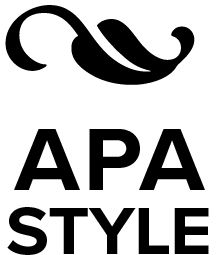Limited time offer: $399 single page analysis with actionable insights. Order Now!
Your Digital Problem Solver
Expand your team with a usability and design consultant. Kristin Kniss, a UX strategist and designer, who offers customized consultancy services for businesses who want to enhance their users' experience within their digital products. We take the work off your plate so you can focus on running a business.
Reach Your Users
Free Checklist for Improvement
Make your website or digital product work for you!
The Ultimate UX Checklist for Website Improvement
We will get back to you as soon as possible.
Please try again later.
FOR EXAMPLE
Data shows that most apps & websites often underperform. For example, 72% of websites receive a failing grade of 59/100 or lower.1
What you get
Clarity & Conversions. We help you understand how to transform your digital presence into a user-friendly, visually appealing, and high-performing digital asset to work for you and your business. Our results aim to enhance user satisfaction, increase engagement, and drive conversions through strategic improvements in design, functionality, and overall website performance.

Why Choose UX Mess?
Hi! I'm Kristin Kniss, founder of UX Mess
- Tailored Solutions: I understand the unique challenges of businesses with low design maturity models and craft customized solutions to address your specific needs.
- Expert Analysis: I dive deep into your digital ecosystem, uncovering hidden opportunities for improvement and optimization.
- Tangible Results: From enhanced usability to boosted conversions, our strategic recommendations translate into measurable outcomes that drive success.
Don't let a messy website hold you back.
Think of us as an expansion to your existing team
Are you drowning in a sea of user experience confusion? We specialize in untangling the complexities of your digital presence. Owner, Kristin Kniss, a seasoned UX expert, specializes in untangling the complexities of digital design, content, and usability for businesses navigating 'low design maturity'—a common hurdle for businesses that don't have a design & usability expert on their team.
With our comprehensive UX audits, you'll say goodbye to frustrating user experiences and hello to seamless interactions that engage and delight your audience. Through meticulous analysis, we uncover pain points, spotlight opportunities, and deliver actionable insights to empower your team and transform your digital presence.
Our mission is to clean up existing tech products.
We provide an outside perspective using proven processes and more than 15 years of experience to take your product from good to great.
1. Research & Understanding
We start by understanding your business goals and your user needs. Then, through comprehensive UX and UI audits, we meticulously analyze user journeys, interface designs, and usability factors across your platforms.
By leveraging industry-leading tools and methodologies, we gain invaluable insights into user behaviors, pain points, and preferences, allowing us to craft data-driven recommendations tailored to enhance the overall user experience and drive business success. Our goal is to empower your brand with actionable insights that pave the way for impactful design solutions and lasting user satisfaction.


2. Data & User Experience Analysis
During this phase, we examine each user journey defined in step 1. We review user interactions, interface elements, and navigation flows to uncover strengths, weaknesses, and opportunities to eliminate user friction.
We use the industry authority guides from Nelson Norman Group rules of heuristic evaluation, user testing, and analytics review. For eCommerce we reference the Baymard Institute. We gain deep insights into user behaviors and preferences. If provided, we review valuable user data. These insights inform actionable recommendations aimed at refining the user experience, enhancing usability, and ultimately driving higher levels of engagement and conversion.
3. Visual Design Analysis
Our user interface analysis is designed to identify misalignments and inconsistencies. We can enhance your brand's digital presence and perception by flagging the pitfalls in your user interface. Through meticulous evaluation, we identify opportunities to align your interface with your brand identity, ensuring consistency and a visual language that resonates with your target audience.
By optimizing usability, aesthetics, and functionality, we not only improve user experience but also reinforce positive brand perception, fostering deeper connections and loyalty among your users.


4. Roadmap & Recommendations
We translate our findings into actionable insights and strategies for improving improving your product. You'll get a comprehensive report outlining specific recommendations tailored to address identified weaknesses and capitalize on existing strengths.
Furthermore, we collaborate closely with our clients to prioritize recommendations based on their potential impact and feasibility, ensuring that the resulting roadmap aligns with their business goals and resources. Ultimately, our goal is to equip our clients with a roadmap for success, guiding them towards achieving a user experience that delights customers and drives business growth.
What People Are Saying

"UX Mess saved us from dumping a ton of $ into ads! A turn-key audit surfaced several issues we needed to fix."
- John Diep, LA Startups
"We were unsure why our site was not converting. A quick audit revealed several issues we were overlooking."
- Nolan, North Point Fishing
"We were confident in our services but not our website appearance. UX Mess helped us put visual upgrades on our site so customer felt good booking with us."
North Point Fishing
"Kristin was incredibly helpful in facilitating a complicated testing."
- Martha, Center for Education in Psychology
"She's a top-notch pro and I couldn't recommend her more highly"
John Butterfield, APA
"Kristin was amazing to work with! She's talented and flexible. You'd be lucky to have her work for or with you."
Mara Greengrass
FAQ
-
Who is UX Mess and what do you do?
Hi - I'm Kristin Kniss, owner of UX Mess. I created a small digital agency dedicated to improving front-end experiences. My team and I work meticulously to assess websites and mobile apps to identify opportunities for improvement. We thoroughly evaluate your digital platform, ensuring it follows heuristic best practices. By adhering to these standards, you're guaranteed an enhanced user experience, leading to improved conversion rates and expanded revenue opportunities.
-
Who are your main customers?
Clients typically fall into one of these three categories.
Clients facing known issues
These are clients who are dealing with clear problems, like high bounce rates, low conversion rates, or negative user feedback. They know something isn’t working but need expert insights to pinpoint exactly why and what to do about it.
Clients uncertain about the scope of their problems
Some clients know their site could use improvement but aren’t sure whether they need a full redesign or just a few targeted adjustments. A UX audit provides the clarity they need to make a smart investment in either a refresh or a full overhaul.
Clients preparing for a major product launch or rebranding (unlaunched sites)
When businesses are launching a new product or undergoing a rebrand, they want to be sure their website aligns with their goals.
A UX audit helps them identify potential roadblocks and align the site experience with the new vision, ensuring it delivers effectively from day one.
-
Who can benefit from a UX/UI Audit?
UX/UI audits are valuable for businesses across various roles and stages of digital product development. Here are some scenarios where a UX/UI audit can be beneficial:
Product Owners
If digital products are not meeting conversion goals we can uncover and address issues in critical user flows through an audit.
Marketing Leaders
If you're looking to understand why your product is underperforming or identify areas for improvement we can provide valuable insights from a UX/UI audit.
Startup Founders
We can assess prototypes and catch and resolve obvious usability issues before development, as auditing a prototype is more cost-effective than reworking a live feature.
Product Managers and Founders
We provide external, unbiased perspective can identify "low-hanging fruit" opportunities that may be overlooked due to proximity to the product.
Development Teams
As all dev teams know, working on products created without dedicated UX/UI expertise can create gaps. The user experience analysis and support will help teams develop with confidence.
Startups
Quickly built websites can receive guidance on enhancing the user experience and taking their digital presence to the next level so that you know you're time is spent wisely.
-
How can my team or product benefit from UX Mess?
Improved User Satisfaction
By identifying pain points and areas of friction in the user journey, businesses can address these issues, leading to increased user satisfaction. A seamless and intuitive user experience can enhance brand perception and loyalty.
Higher Conversion Rates
A well-designed user interface and smooth user experience can positively impact conversion rates. By optimizing the UI and streamlining the user journey, businesses can encourage users to take desired actions such as making a purchase or signing up for a service.
Reduced User Abandonment
An audit helps in identifying factors that contribute to user abandonment, such as slow loading times, confusing navigation, or unclear calls to action. By rectifying these issues, businesses can reduce the likelihood of users abandoning their interactions with the digital platform.
Increased Engagement
A user-centric design approach resulting from the audit can lead to higher levels of engagement with the digital platform. Engaged users are more likely to spend time exploring the platform, interacting with its features, and ultimately achieving the desired outcomes.
Improved Brand Reputation
A positive user experience can significantly impact brand reputation. A UX/CX and UI audit can help ensure that interactions with the brand's digital presence are consistent, intuitive, and aligned with user expectations, thereby strengthening the brand's reputation.
Cost Savings
Addressing usability issues and design flaws early through an audit can prevent costly redesigns or redevelopments in the future. Investing in improving the user experience upfront can save businesses money in the long run by reducing the need for extensive fixes later on.
Competitive Advantage
In today's competitive landscape, providing an exceptional user experience can be a key differentiator. A UX/CX and UI audit enable businesses to stay ahead of competitors by continuously optimizing their digital offerings based on user feedback and industry best practices.
Data-Driven Decision Making
A comprehensive audit provides valuable insights into user behavior, preferences, and pain points. By leveraging this data, businesses can make informed decisions regarding future product development, feature enhancements, and marketing strategies.
-
Does UX Mess implement the changes?
No, we are hyper-focused on evaluating your digital product and guiding you in the right direction. We take an objective approach based on proven practices and data. We will not try to upsell you any additional services.
However, we don't want to leave you overwhelmed with a to-do list. We do know many partners in the industry, and will gladly connect you.
-
Why is this important?
Imagine walking into a store where the aisles are confusing, the signs don’t make sense, and you can’t find what you need. Frustrating, right? You’d probably leave and shop somewhere else.
The same thing happens online. If a website or app is hard to navigate, slow, or unclear, people get frustrated and leave—which means lost customers and missed opportunities.
Good design and structure make things easy for visitors. When a website is clear, simple, and intuitive, people can quickly find what they need and take action—whether that’s making a purchase, signing up, or learning more.
Big brands like Airbnb, Spotify, and Amazon invest heavily in making their digital experiences smooth and frustration-free because they know when people have a great experience, they stay longer, engage more, and take action.
It’s not just about looks—it’s about making sure people can do what they came to do, effortlessly. 🚀
A study by Forrester found that every dollar invested in UX brings $100 in return—that's a staggering 9900% ROI. 2
From Our Blog
The best of branding, user experience, the importance of design, and more!













